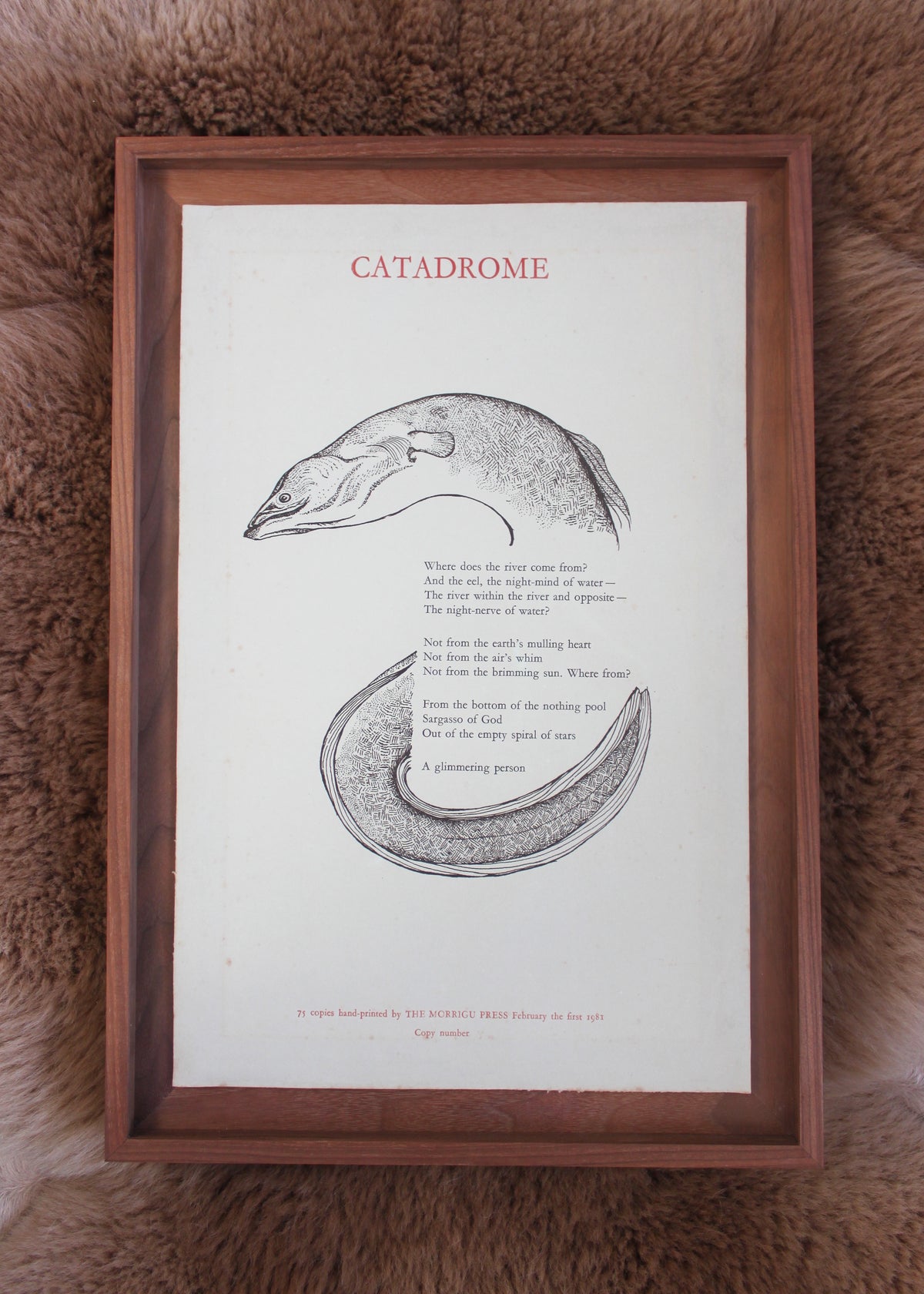
This week we stopped by for a studio visit with the London-based clay artist, Sam Bakewell. Sam has explored the possibilities of clay since childhood—first encountered in grade school, the medium now sits at the core of his practice as the current ceramics resident at the Victoria and Albert Museum. Given that Sam spends his days in the legendary ceramics collection galleries at the V&A, we couldn't help but wonder if the immersion had perhaps swayed his choice of 'permanent collection' thing...
Sam Bakewell: Sorry to disappoint, but I'm afraid my 'thing' isn't made of clay. It's a Ted Hughes poetry broadside called Catadrome, one of the Three River Poems printed by his son Nicholas's Morrigu Press in 1981 and signed and illustrated by Ted. The poem reads:
Where does the river come from?
And the eel, the night-mind of water—
The river within the river and opposite—
The night nerve of water?
Not from the earth’s mulling heart
Not from the air’s whim
Not from the brimming sun. Where from?
From the bottom of the nothing pool
Sargasso of God
Out of the empty spiral of stars
A glimmering person
Permanent Collection: How did you come to own it?
S.B.: By mistake really. After pouring over 4 broadsides of Ted's Moortown Elegies and eventually coughing up for them from a seller in Cecil court, he mentioned he had an unnumbered broadside he’d throw in for 20 quid…Turns out it was just sun-bleached, and No.14/75, and one of the few published examples of Ted’s drawing. I had it float mounted in a walnut tray to show it off, warts and all, and loved it instantly.
P.C.: What was it that drew you to the piece?
S.B.: The EEL. The pale green color. The sunspots and foxing. Almost a throw-away being that beautiful. The way deep-embossed etching crosses between word and object. What’s not to love about a glimmering person from the nothing pool?
P.C.: Something you're obsessed with or thinking heavily about?
S.B.: The use of 'time' and 'waste,' and, more specifically, dust. Also, the boundaries between intentional and arbitrary making.
P.C.: Tell us about your residency at the V&A? What’s it like to pull from the museum’s vast collection and how is the collection informing your new work?
S.B.: The residency is based around the links between mental health and creativity, using the late Victorian studio potters The Martin Brothers and gothic romantic anthropomorphism as the starting point. Only 5% of the museum's collection is on show at any point, so I’ve been continually surprised what the collection encompasses. At the moment, translating various illustrative approaches into clay has been keeping me busy.
P.C.: What’s a current must-see exhibition in London?
S.B.: Well, it was my show at Corvi-Mora, called 'Time for Waste,' but I'm afraid it's come down now...


